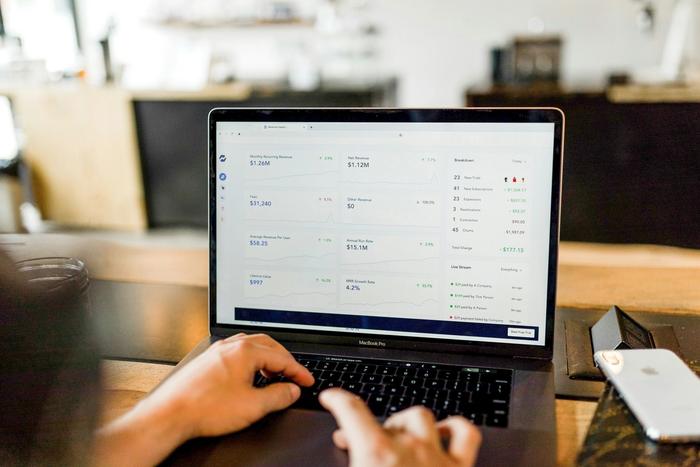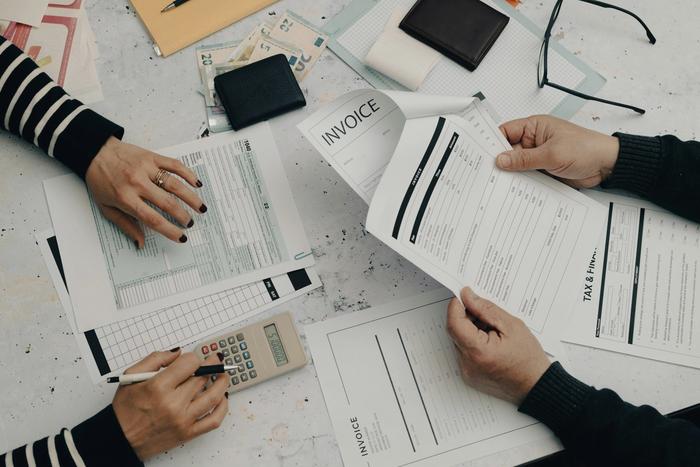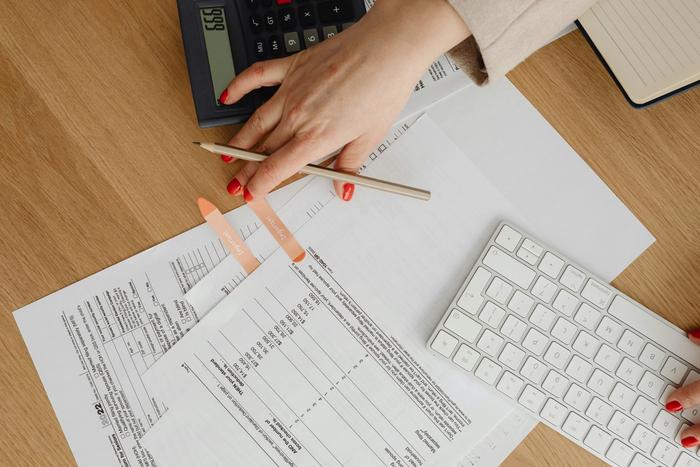Small business accounting can seem overwhelming, especially when you're starting out. But, it's one of the most important parts of running a successful business.
Accounting helps you track income and expenses and is crucial when considering tax season. Understanding the basics of small business accounting can help you make informed decisions and ensure your business continues to grow and thrive.
Whether you manage your finances yourself or hire a professional, mastering these foundational skills will give you the confidence to handle your business’s finances.
What is small business accounting?
Small business accounting is the process of tracking, recording, and analyzing financial transactions. This includes sales, expenses, payroll, and more.
It helps you understand your business's profitability by creating financial statements like your income statement and balance sheet.
Put simply, it's the process of keeping track of the money coming in and out of your business bank account and organizing your company's assets and liabilities.
Whether you choose to manage your business finances yourself, or want to hire a bookkeeper you need to understand the basics of small business accounting.
Doing so is crucial for understanding your business's financial health and communicating its position.
The key aspects of small business accounting you should understand are:
- Bookkeeping: Recording financial transactions
- Payroll: Managing employee payments (if applicable)
- Financial Reporting: Preparing statements like balance sheets, cash flow statements, and profit and loss statements
- Tax Filing: Ensuring compliance with tax obligations.
Accounting helps you evaluate your business's financial health and make informed decisions for short-term improvements and long-term success.
Here are a few basic steps to set up an effective accounting system for your small business.

Setting up accounting in your small business
Open a small business bank account
A separate bank account used strictly for business purposes is a smart way to protect your personal assets in case of bankruptcy, lawsuits, or audits.
If you ever need funding from creditors or investors, a business bank account creates strong financial accounting records like bank statements and business financial statements, that can greatly improve your chances of being approved.
Start by opening a business checking account then consider adding a savings account to help you manage your cash flow and plan for tax season. For example, you could set up a savings account specifically for self-employed tax withholding. Typically, you should set aside 25% of your income in savings but this depends on your business's success.
Sole proprietors aren't legally required to have a separate account, but it's best practice. For LLCs, partnerships, and corporations, however, it's a legal requirement. So, be sure to check the specific rules in your area.
Consider a business credit card
A business credit card is a great way to start building credit for your company. Good credit is essential when securing funding or making big purchases in the future. For LLCs and corporations, a separate business credit card is required to keep personal and business finances separate.
Before choosing a card, think about your business expenses and spending habits. For example, if you travel a lot, consider a card with travel perks like air miles. If your spending falls into one category, look for a card like Shopify Credit that gives cash back on your top spending category.
When choosing a business credit card, think about your spending habits. If you travel a lot, a card with travel perks like miles could be a great fit. Or, if most of your spending falls into one category, look for a card like Shopify Credit that gives cash back on your top spending category.
Track your expenses
Accurate expense tracking is one of the most essential parts of small business accounting. It's the best way to garner a clear view of your company's growth helping to simplify the creation of financial statements and identify deductible expenses. Doing so streamlines your tax preparations and establishes a clear and reliable system for organizing receipts and recording transactions.
Whether you prefer a manual process or to use accounting software, having a consistent approach will save time and prevent headaches down the line.
What expenses do you need to track?
The IRS requires business owners to provide documentation to substantiate their income, credits, and deductions reported on their tax returns. The exact records you need to keep depend on your business type, but in general, you should keep records of:
- Receipts
- Bank and credit card statements
- Canceled checks
- Invoices
- Proof of payments
- Financial statements
- Previous tax returns
- Bills
- W-2 forms for employees
- 1099 forms for contractors
- Other supporting documentation for income, deductions, or credits on your tax return.
These statements can be held in physical paper or digital form, whatever is more convenient. Lots of accounting software makes this process easier by allowing you to scan, organize, and securely store your documents making it easier to track and manage your personal accounting system.

Key business expenses to track
Now you know what records you need to keep to stay on the IRS's good side, it's time to look at specific expense categories. These are transactions that directly affect your business operations and tax deductions and therefore need to be tracked very carefully.
Here are common types of expenses your business should document carefully:
- Meals and entertainment
- Out-of-town business travel
- Auto-related expenses
- Receipts for gifts
- Supplies
- Professional services (e.g., CPA, attorney)
- Home office expenses.
Home office deductions
Many business owners run their organizations from home to reduce overhead and gain additional tax benefits. The IRS allows you to deduct the portion of your home used exclusively for business from your taxes. This can include internet, phone service, and work-related transport.
Mixed-use expenses
For expenses that are both personal and business-related, like vehicle use, you can only deduct the portion used exclusively for business. For example, fleet card options or gas mileage costs for business purposes are 100% deductible so keep detailed records and log your miles and keep accurate records.
Choose an accounting method
Before selecting an accounting method you must understand the difference between accounting and bookkeeping. While both are essential processes, they serve different purposes.
Bookkeeping is the day-to-day task of recording transactions, categorizing expenses, and reconciling bank statements. It’s essentially what keeps your finances in order.
Accounting, on the other hand, is a high-level process that analyzes the data from bookkeeping to provide insights into your business’s progress, prepare financial statements, and guide strategic decisions.
Managing your business books
As a small business owner, you have several options for managing your bookkeeping:
- DIY with accounting software: Tools like QuickBooks, Freshbooks, and Xero can help you track your debits and credits.
- Outsource to a professional bookkeeper: This could be a local professional or a cloud-based service that handles your books remotely.
- Hire an in-house bookkeeper or accountant: As your business grows, having a dedicated team member for bookkeeping and accounting could make sense.
With plenty of affordable and user-friendly accounting software available, there’s a solution to fit nearly every budget and business size.
Comparing accounting methods
There are two main options when it comes to selecting an accounting method. These are cash accounting and accrual accounting methods. Your choice will depend on a couple of factors including your business's annual revenue and where your business is registered.
In the U.S. for example, businesses earning less than $5 million a year in revenue can use the cash method but for larger organizations, the accrual method is required. In Canada, however, most businesses are acquired to use the accrual basis accounting method, but small businesses can use the cash method for day-to-day tracking and instead make adjustments at the end of the year for tax purchases.
Explained simply, the two methods are:
- Cash method: You record income and expenses when cash is received or paid. This method is simple and often favored by small businesses
- Accrual method: You record income and expenses when they occur, even if cash hasn’t yet exchanged hands. This method gives a clearer picture of your financial health but requires tracking accounts receivable and payable.
Set up a chart of accounts
A chart of accounts is a comprehensive list of all your business accounts, to record transactions. Accounting software typically has this built into its program but if you're managing your books manually, the chart of accounts functions as part of your general ledger.
To create your chart, organize your accounts into broad categories like assets or expenses. From here you can break them down into more specific subaccounts, each category is assigned a unique range of numbers making it easy to track individual accounts within the system.
Here's an example of how it could look:
- Asset: Checking account – 1025
- Asset: Savings account – 1005
- Asset: Money market account – 1020.
This system is applied to all your account categories including assets, liabilities, equity, revenue, and expenses. Keeping your chart of accounts well organized ensures all your financial data is accurate and easy to track.

Determine your fiscal year
Small business owners have the flexibility to decide when their fiscal year begins and ends. The only restriction is that it's a consecutive 12-month period. During this time you can track and record all your business transactions and activity.
A common choice is to align your fiscal year with the calendar year, for example, running from January 1st to December 31st. Alternatively, you might start your fiscal year in line with your country's tax year, if you're in the UK this would be April 6th till April 5th the following year.
Seasonal businesses often align their fiscal year with the start or end of their business season. This makes planning more intuitive for them, but ultimately the best fiscal year is the one that complements your business's workflow and financial needs.
Choosing the right payment system
Most of your business's financial transactions are happening digitally, so it's important to choose a payment solution that fits your business model to avoid any potential cash flow problems.
Whether you accept payments in person, online, or both, the right setup is crucial for ensuring a seamless experience for all your customers helping to simplify your financial management.
Payment system options
In-person and POS payments: A mobile credit card reader like Square or PayPal is ideal for businesses with a low daily volume of in-person transactions. For higher-volume operations or those that rely exclusively on POS systems, a full POS set with a cash register and card reader could be better..
All in-person payment solutions require a merchant bank account to act as a bridge between your payment system and bank account helping to handle deposits and withdrawals.
Online payments: If your business operates exclusively online consider platforms like PayPal or Shopify. These allow you to accept debit or credit card payments without needing a separate merchant account or a third-party gateway.
Payment processor fees: When choosing a third-party payment processor, it's important to consider the fee structure. Many providers charge an interchange-plus rate of around 2.9% plus $0.30 per transaction while others offer flat fee-based or subscription-based models with unlimited transactions. Research and compare options in your region to find one that best aligns with your budget and business structure.
Set up a payroll system
As a business grows, you'll need to consider hiring additional employees or independent contractors. Each comes with a different set of responsibilities that you need to consider. Employees require payroll services that withhold taxes and comply with other labor laws. A lot of accounting software options have payroll features built in to simplify tax calculations and ensure compliance.
Independent contractors, on the other hand, manage their own taxes and benefits. You will still need to keep detailed payment records and file a 1099-NEC for each contractor who paid more than $600 within a year.
Calculate gross margin
Improving the gross margin of your business is a critical step towards increasing your overall income and long-term success. Gross margin is more than just a financial metric, it reflects how effectively your small business is at turning sales into a profit. Understanding and optimizing this figure is a crucial part of small business accounting as it directly impacts your ability to cover operating expenses, reinvest in growth, and generate sustainable profits.
First, you need to understand two key terms:
- Cost of goods sold (COGS): These are the direct costs associated with producing the products you sell, including materials and direct labor.
- Gross margin: This represents the percentage of sales revenue retained after covering COGS, showing how efficiently your business generates profit from its products or services.
To calculate gross margin, use this formula:
Gross margin (%) = (Revenue - COGS) / Revenue
For quick and accurate calculations, you can also try our free profit margin calculator to plug in your numbers effortlessly.
Your gross margin helps you make informed decisions about pricing, cost management, and profitability. By improving your margin, you not only increase the income your business retains but also gain a clearer picture of your finances.

Financial statements
Financial statements are essential for tracking how well your business manages income and expenses. They're critical if you plan on applying for financing, so every small business needs to create and manage three key statements.
- Income statement: Also known as a profit and loss (P&L) statement, this documents your business’s income, expenses, gains, and losses over a specific period. It also helps determine your net profit or net loss.
- Balance sheet: This statement is a snapshot of your business’s financial stability as it records assets, liabilities, and equity, showing what your business owns and owes.
- Cash flow statement: This tracks how money moves in and out of your business, helping you assess whether you have enough cash to cover expenses.
If you use accounting software, this can generate these automatically, saving you time and ensuring accuracy.
Tax implications
Taxes are a crucial part of running a small business. You’ll need to file federal, state, and possibly local taxes, with specific obligations depending on the structure and size of your small business. At the federal level, taxes can include income tax, self-employment tax, estimated tax, employer tax, and excise tax.
Failing to meet tax obligations, such as missing estimated quarterly tax payments, can result in penalties. If you have employees, don’t forget to account for payroll taxes. Making a mistake can prove very costly, so if you're struggling to keep up, consult with a tax professional who can guide you through the process.
Establish sales tax procedures
If your business sells goods or services, you’ll need to collect sales tax. Make sure to understand your state’s requirements and implement a reliable system that calculates, collects, and remits sales taxes accurately.
Most accounting software automatically calculates sales tax, helping you avoid potential compliance issues.
Determine tax obligations
Your tax responsibilities are determined by your business structure. For example, sole proprietors report business income on their personal tax return, while corporations file their separately.
If you deal with international clients or suppliers, you might need to consider import taxes. Knowing your specific obligations is crucial for helping you stay legal and compliant.
Deducting business expenses
The IRS allows businesses to deduct certain expenses, reducing taxable income.
These can include:
- business meals and travel
- insurance and utilities
- home office expenses
- employee benefits
- retirement plan contributions.
Keep detailed records of all your business expenses, whether as receipts or digital tracking tools. These allow you to substantiate deductions during tax season or in case of an audit.
Software and tools for small business accounting
Accounting software can save small businesses time money and stress - especially if you have a small team and limited resources.
These tools can handle tasks like:
- generating financial statements
- managing payroll and inventory
- tracking accounts payable and receivable
- creating cost predictions and forecasts.
Popular options like QuickBooks, FreshBooks, and Xero offer features tailored to small business needs and can be integrated with other essential tools like your CRM system. When choosing software, consider the specific features your business requires and compare costs to ensure a good fit.
Wrapping up
Accounting is the backbone of any small business enabling you to manage your finances, accurately submit taxes, and plan for future growth. By setting up a strong accounting system, tracking expenses, choosing the right tools, and understanding your tax obligations, you’ll have the clarity to make sound financial decisions.
Pairing your accounting efforts with a customer relationship management system can further streamline your operations, helping you track customer transactions, manage invoicing, and monitor payment histories all in one easy-to-use tool.
Find out more about how Capsule can help you and sign up for our free 14-day trial.




